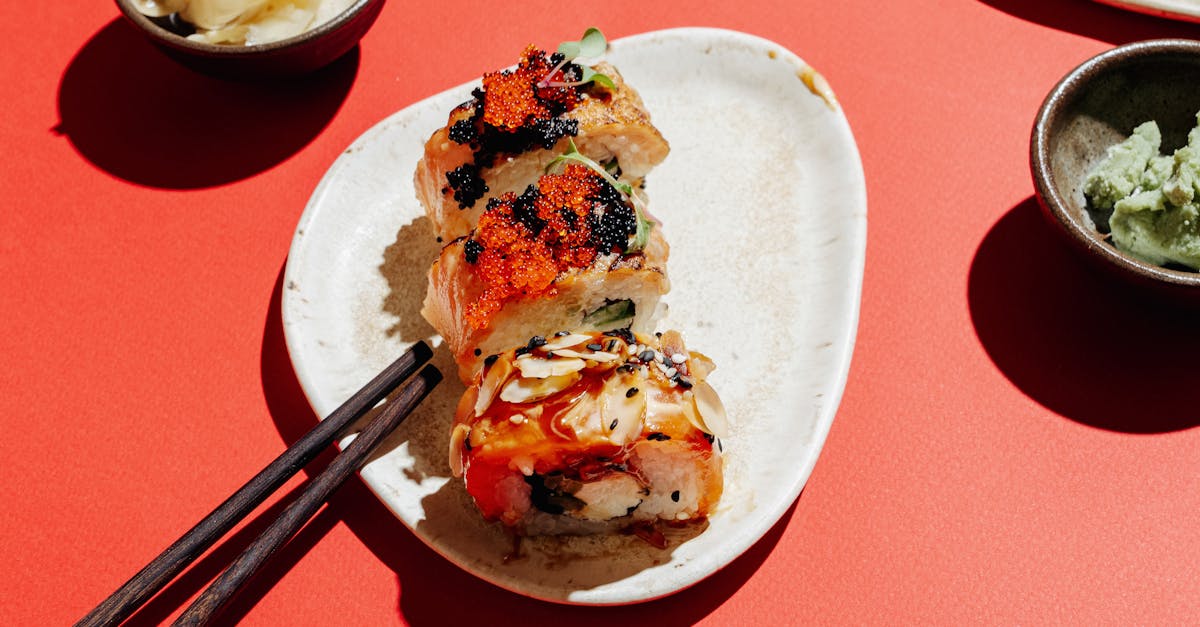
Introduction
Imagine a world where culinary boundaries are blurred, and flavors from diverse cuisines blend seamlessly to create extraordinary taste experiences. Welcome to the realm of Flavor Fusion Frontiers, a dynamic and evolving culinary trend capturing the imagination of chefs and eaters worldwide. This innovative approach to cooking thrives on creativity and bold culinary experiments, leading to unexpectedly delightful fusions. Flavor fusion is not just about combining different cuisines; it's about crafting harmony between contrasting palettes, leading to a culinary renaissance. Dive into this flavorful world where cross-cultural gastronomy takes center stage, redefining what it means to eat globally. Discover how chefs are pushing the limits of tradition, piecing together the perfect balance of taste and texture.
The Origin and Evolution of Flavor Fusion
Flavor fusion officially entered the culinary scene in the late 20th century when adventurous chefs, inspired by globalization, sought to transcend conventional cuisine. Initially met with skepticism, the trend blossomed as diners embraced the unexpected symphony of flavors. Key figures like Wolfgang Puck and Roy Yamaguchi spearheaded the movement, creating iconic fusion dishes that paved the way for future chefs. As travel and digital connectivity expanded culinary awareness, chefs began incorporating exotic ingredients and techniques into mainstream dining. This fusion revolution isn't confined to upscale dining alone; it extends to street food, fast casual establishments, and even home kitchens. Thus, fusion has solidified itself as a staple in contemporary culinary culture.
Culinary Techniques and Inspirations
At the heart of flavor fusion lies the artful blending of culinary techniques from various cultures. This innovative practice is not limited to merely mixing ingredients but encompasses cooking methods, presentation styles, and cultural narratives. Inspirations for fusion cuisine are drawn from diverse regions, creating unexpected gastronomic delights that honor the individual essence of each culture involved. Techniques like tempura, confit, and smoking are utilized to impart distinctive textures and flavors. Marrying spices and aromatics like lemongrass with Western sauces or infusing Asian umami-rich ingredients into traditional European dishes exemplifies the creativity central to the fusion movement. Chefs find inspiration in blending cultures, aiming for an ideal balance of tradition and innovation.
Popular Flavor Fusion Trends
Today, flavor fusion manifests in myriad exciting trends, each bringing unique culinary narratives to the table. One popular trend is the fusion of Latin American and Asian cuisines, celebrated for its vibrant, zingy flavors and bold colors. Dishes such as Korean tacos or sushi burritos exemplify this delicious blend, offering a palate full of surprises. Mediterranean and Middle Eastern cuisine fusion unites aromatic spices and bold seasonings with fresh produce, creating unforgettable taste experiences. From Caribbean jerk chicken pizza to Italian-Indian curry pasta, these imaginative combinations highlight chefs' endless creativity. The result? A delightful culinary melting pot that continues to tantalize taste buds around the globe.
Sustainability and Local Ingredients
Flavor fusion extends beyond taste—integrating sustainability and local sourcing into its core philosophy. Chefs prioritize serving innovative dishes while promoting conscious consumption by utilizing local ingredients, promoting regional agriculture, and minimizing food waste. This approach to fusion cuisine seeks new and diverse applications for native produce, often overlooked or underappreciated. By combining imported flavors with local staples, chefs not only deepen the complexity of their recipes but also foster environmental accountability. This borderless approach ensures that flavor fusion is not only about taste but also about nourishing the planet. Through sustainable practices, the culinary world is shifting towards conscious, forward-thinking dining experiences.
Role of Technology in Flavor Fusion
Technology plays an instrumental role in the ongoing evolution of flavor fusion, serving as both a catalyst and a facilitator. With social media platforms and online culinary communities, chefs share their creative techniques and explore cross-cultural influences. This digital dialogue encourages an exchange of ideas, allowing chefs to collectively build upon the fusion framework. Advances in kitchen technology, such as molecular gastronomy tools and precision frying equipment, empower chefs to push the boundaries even further. Cutting-edge software helps predict flavor pairings, enable digital recipe innovations, and simplify complex processes. Consequently, technology's role in fusion cuisine reinforces a progressive culinary trajectory.
Consumer Appetite for Flavor Fusion
Flavor fusion's popularity is fueled by an adventurous dining culture and a desire for novelty, as consumers increasingly seek out unique and diverse culinary experiences. Millennial and Gen Z diners prioritize authenticity and creativity, often choosing dining options that promise an unforgettable journey through global cuisines. Social media's influence amplifies consumer curiosity, as visually stunning fusion dishes captivate users worldwide. Restaurant branding often highlights these innovative creations, placing fusion-based concepts at the forefront of marketing strategies. This consumer-driven demand for fusion fuels culinary innovation, encouraging chefs to experiment in ways that both challenge and delight their patrons.
Challenges of Flavor Fusion
While flavor fusion is a testament to culinary creativity, it also presents several challenges. Achieving the perfect balance between contrasting flavors requires skill and understanding. Chefs must navigate the complexities of cultural authenticity to respect traditional culinary practices while crafting inventive dishes. Balancing innovation with comfort can be tricky, as chefs attempt to satisfy both adventurous diners and those who prefer familiar flavors. Furthermore, fusion cuisine risks being dismissed as culinary gimmickry if not executed proficiently. Addressing these challenges requires chefs to engage in continuous research and refinement while maintaining a deep respect for the traditions that make this fusion possible.
The Future of Flavor Fusion
As culinary landscapes continue to evolve, flavor fusion holds exciting potential for future innovation. Chefs will increasingly explore cross-cultural boundaries and embrace new cuisines, leading to even more delightful combinations. The trend may see greater diversity, serving as a platform to raise awareness of marginalized cuisines and elevate them to global prominence. Fusion's reliance on sustainability and local ingredients will continue to deepen, paving the way for more environmentally responsible dining experiences. Collaboration between culinary artists worldwide will foster an ever-expanding tapestry of flavors, ensuring that flavor fusion remains a dynamic and integral part of the culinary world.
Conclusion
Flavor Fusion Frontiers have undeniably reshaped the global dining experience, capturing culinary imaginations with their innovative blends. As chefs push the boundaries, exploring new horizons and respecting age-old traditions, flavor fusion continues to make an indelible mark on contemporary gastronomy. Embracing sustainability and technology, this trend encapsulates the endless potential of what the culinary world can achieve. With its focus on creativity and collaboration, flavor fusion will undoubtedly thrive, standing as a powerful symbol of unity within diversity. The future of dining holds limitless potential, and the journey of Flavor Fusion Frontiers has only just begun.